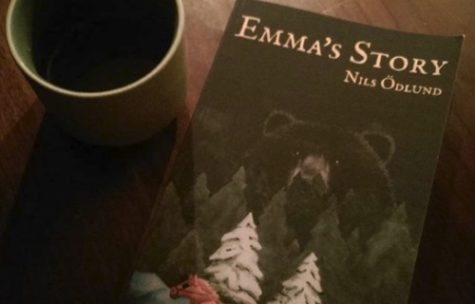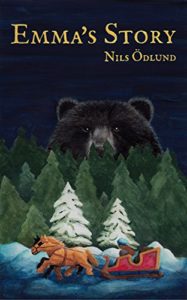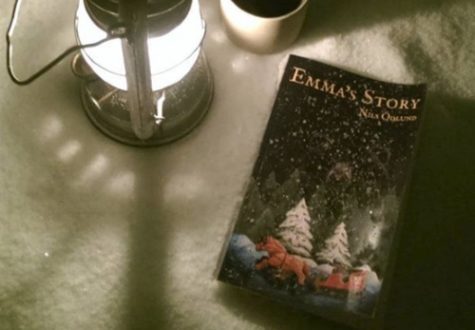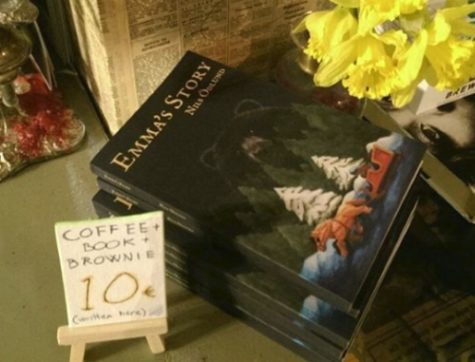
A few weeks back I wrote about how I went from a vague idea to a finished story (here), and this week I’ll talk about how I turned that story into a published book. It was at the same time both rather complicated, and very easy.
If you just want to publish, you can upload your book to Amazon, select a cover image, and click Publish. That’s it. It’ll take longer for them process your request than it did for you to submit it.
Except, that’s kind of like saying that to write a book you just have to type down some words. It’s technically true, but there’s a little bit more to it than that.
Before we get into all that though, I’d like to point out that this isn’t a guide on how to publish a book. It’s my story of how I did it and what I learned along the way.
Most of all, I learned that I have a lot left to learn.
Doing it Myself
I don’t want to dwell too much on the topic of self-publishing as compared to traditional publishing, but I figured I should at least mention it. One way or another, someone’s bound to ask why I decided to self-publish.
I have a few different reasons, but most of all: because I felt like it.
It seemed like the right thing to do, and I figured it’d be a good way to learn about the business if I did it all myself. So I did. My book is published through Amazon’s KDP (Kindle Direct Publishing), and it’s available both in ebook and in Paperback format.
Where to Start? When to Publish?
 Before I even had the final text finished I began looking into getting a cover image made. I have the fortune of having a close friend who’s a talented artist and who offered to paint a cover for me. Unfortunately, it took some time for the painting to get finished. I’d originally hoped to publish the story at the beginning of November, but because the cover wasn’t ready I decided to push it back to December.
Before I even had the final text finished I began looking into getting a cover image made. I have the fortune of having a close friend who’s a talented artist and who offered to paint a cover for me. Unfortunately, it took some time for the painting to get finished. I’d originally hoped to publish the story at the beginning of November, but because the cover wasn’t ready I decided to push it back to December.
Thinking about the date, I realised that as a new and unknown author it might not be such a good idea to launch my first book that close to Christmas. Sure, it’s a time when a lot of people are buying a lot of things, but it’s also a time when we all get bombarded with messages encouraging us to purchase this or that product.
I didn’t have much of an advertising budget, so I decided to push the launch back until the beginning of February instead. That meant my friend would have time to finish the painting, and it gave me more time to figure out promotion and advertising.
Promoting the Book
Over the last year or so I’ve picked up a few bits and pieces of advice on how to promote a self-published book. Pretty much everyone seems to agree that the best way to do it is to write and publish another book. That is certainly part of the plan, but it’s going to be another few months until I’m ready to release my next story into the wild.
In the meantime I tried out a few other things I’d heard about.
Newsletter Promotions
I’ve learned that there are promotional services you can sign up for (usually for a fee) that will list your book on their website and in their newsletter. This can be a good way of letting potential readers know that your book is available and help them find it. These services have a limited number of slots for each mail, and will only show so many books on their site on a given day. It’s a good idea to sign up well in advance.
To make sure I had time enough I uploaded my book to Amazon near the end of December, and I set the release date for the 2nd of February. I now had a link to share where people could pre-order my book, and that I could use when signing up for promotions (the link remains the same once the book goes live).
Mailing List
I have also learned that creating a mailing list and a newsletter for people to sign up to is a great way to reach readers who are interested in your writing. I created a mailing list using MailChimp, and I put in a link at the end of my book letting readers know they could sign up for it.
It seemed a bit silly though. I only had the one book and it’s a standalone with no sequel. There’s no major incentive for readers to sign up to learn about the next release – especially as they don’t even know if there will be one (spoiler: there will be).
Free Previews
While pondering whether or not a mailing list was worth the effort I learned about giving away free previews of your book. Instafreebie is a website which lets authors give away copies (including previews) of their books for free. They also have support for MailChimp which means readers can sign up for the author’s mailing list when they downloaded a book.
At first I only did a single giveaway on my own that I told my friends about. I then learned that by signing up for a free 30-day trial I could join group giveaways with other authors. In this way the combined promotional power of all authors taking part helps bring attention to the giveaway. Through one such group I was able to give away a free preview (first four chapters of the story) to over 70 readers. Out of them, 15 signed up for my mailing list.
After the giveaway had ended I learned that there’s an option to make the signing up on the mailing list a mandatory requirement for getting access to the free book. It might have resulted in more signups, but probably also in less downloads. It’s too late now, but I’ll try it out next time.
Paperback Version
A lot of my friends, and a whole lot of other people too, prefer their books in the old-fashioned way – printed on paper instead of as digital downloads. As such, I decided that a paperback version would be in order. I wanted to hold off on making that available until I had the final cover for the book though.
The cover arrived in the middle of January, and it was perfect. I put the book together, uploaded it, and clicked the Publish button.
That’s when I discovered I didn’t have the option to set up pre-orders for paperback books – only for ebooks. Turns out I accidentally published my book a little over two weeks early.
If I’d known that, I probably wouldn’t have done it. It seemed to me like the logical thing would be to publish both versions at the same time. However, after the paperback went live and I complained to the world about my mistake, someone pointed out that this would be a good way to get some reviews before the ebook version came out.
In the end I had two Amazon reviews on the 2nd of February when the ebook version went live. It wasn’t quite as many as I’d hoped for, but if I hadn’t accidentally released the paperback early I wouldn’t have had any at all.
Advertising
At first, my plan was to not do any advertising until I had a few more reviews of my book. I couldn’t quite stop myself though, and I put a little bit of money into promoting some of my Instagram posts I’d made about the book – pretty images with lines from a poem about the story. I did get a few hits and I may have gained a sale or two, but not nearly enough to to cover the cost of the promotion.

I decided I’d be better off chalking it up as a learning experience and try to read up a little on how to make good ads. That’s still on my to-do list, but I hope to have read at least one book on the topic before I publish my next book.
My main takeaway here is that if you don’t know what you’re doing ads can be a big money sink with little to no benefit.
Creating the Book(s)
I created three different versions of my book – if you count the free preview version I gave away on Instafreebie. All three were created in slightly different ways, using different file formats.
Instafreebie uses ePub which is a format suitable for mobile devices such as pads and phones. To create my epub file I used Calibre which is a free program for converting text documents into ebooks. In the process I discovered that Instafreebie’s guide for making ePub files is really good, and it showed me exactly what to do to get my book set up correctly.
Amazon supports a number of different ebook formats and my initial plan was to create an ePub file like I did for the free preview. However, when looking into it I found out Amazon provides a formatting tool called Kindle Create and I ended up using that. It took a little bit of getting used to, but I think that’s more due to me having wrong expectations than any actual issue with the app itself.
For paperback versions Amazon uses pdf files, both for the internal text of the book and for the cover image. This version caused me the most hassle, but mostly because I initially downloaded the wrong document template for the book. Once I’d discovered my mistake I only had to copy my story into the template, make sure it looked good, and save it as a pdf.
Full disclosure: I have a little bit of experience doing layout for print and it probably helped here. Formatting a book may not be trivial for a complete beginner – but there are plenty of guides if you need help.
Pricing
Last but not least: money. How much is the book? How much am I comfortable charging for it?
Emma’s Story is a novella. It’s 37,000 words, and probably takes an average reader between three and four hours to read. The paperback version is about a third of an inch thick (8 millimetres).
For the ebook version I decided to launch the book at 0.99 and I made sure the price was the same number in all regions. I figured 0.99 looks good even if it’s not the same amount in GBP as in USD or Euro. I also decided that a week after launch I’d raise the price to 2.99 instead.
Launching at a lower price means people who don’t know me are more likely to take a chance on the book, and I’ll hopefully get a few more sales that way. At this stage it’s more important for me to get my book read than to make big money off of it. I can (hopefully) get to that later.
In the end it took ten days until I raised the price to 2.99. It wasn’t part of the plan, but I doubt it made a difference. My thinking here is that after the initial rush tapered off (I’ve only sold one copy in the last two weeks) the only people who come across the book will have found it because they were told about it. That means they’ll have a recommendation from someone, and they’re less likely to be deterred by the slightly higher price.
Also, 2.99 isn’t particularly expensive for a few hours of entertainment. It’s not a price I’m ashamed to ask.
The paperback version is priced at 4.99. This is about as low as it can get and I make almost no profit at all from it. I figure most people who buy it will be friends of mine who want something to put on the shelf and the lower price is mainly for them.
Results?
So how did it go? Did I sell any books?
Yes, I did actually, and now that I’m tallying it up, it’s more than I actually thought.
I sold 48 copies of the ebook version, including 12 pre-orders, and one I bought myself to see how it looked on the phone. The paperback version sold 12 copies in January and 11 copies in February.
On top of that I ordered a number of paperback copies for myself that I’m selling at the coffee shop where I wrote most of the story. So far, 6 of those have been sold.

My best day of sales was on the Sunday after the release when I had a promotion with Bargainbooksy.com and sold 14 ebooks (the promotion cost me $40, so I didn’t make my money back).
Still, I’ve sold over 70 books, which I should probably be happy with.
What did I learn?
After all this, what did I learn? What will I keep, and what I will do differently next time?
- I’m going to release a paperback version early on so that I can get some reviews.
- Getting reviews can be difficult, even if you’re asking good friends. Don’t hold it against them if they don’t do it even after the said they would.
- I’m going to do a free giveaway of the first few chapters of the book to try and reach new readers and build my mailing list.
- I’m going to have a sequel ready to release shortly after the first book.
- I will not waste more money on advertising before I have at least half a clue what I’m doing.
- I will have one or two alternative blurbs ready for promotional newsletters that don’t want the same blurb that’s on Amazon.
Resources
These are the links to the various resources I mentioned in the article:
- MailChimp: mailing list provider
- Instafreebie: free book giveaways
- Bargainbooksy: newsletter promo
- Free Kindle Books & Tips: the other newsletter promo I used.
- 20BooksTo50K: Facebook group about indie publishing. Lots of advice on promotional matters.
- Amazon KDP: where I published the book
- Emma’s Story: my book.
Final Words
Did you publish a book, and what advice do you have for me, or anyone else getting started publishing their first few books?
Is there some part of this process that you’d like to read more about?


Thank you, glad you liked it. 🙂
Very helpful! You’ve given me a lot to think about and given me some insight into the finer points of Amazon publishing. Thank you!
Yes you're right; ideally I'd like to give the stickers away / leave them in an appropriate place, but I haven't quite figured out exactly where yet. An update on my efforts though; I've recently put artistic posters up in several venues, with permission. Ranging from art places, to libraries, student unions, and cafes. Woop-Woop!
Thanks for sharing your experience.
I myself have tried to generate awareness of my first book by first setting up a basic social media presence for it (something I’m no expert at whatsoever); the book’s namesake Facebook, Twitter, and Blog, where I post a lot of supporting materials. I’ve got 55 likes/follows on the Facebook page, and 23 Twitter followers (I topped out at 25, but apparently people prefer to un-like in case it costs too much, pun intended). This is free advertising, so why not? I haven’t chosen to do Facebook ads, mostly because I don’t trust the platform (with valid reason).
In terms of paid advertising, here is what I have experimented with:
Ads on Amazon; I found them to be a mixture of glitchy, and close to 0% effective. The stats even showed half the ads had Zero displays even,and those that were were clicked on close to zero times.
Ads on Goodreads; The stats are a little complicated; the only positive way of knowing if they have had an effect is by looking at the daily report sent via email, telling you how many people have ‘added’ your book on Goodreads. Most days it’s zero for me, But there are days where 1, sometimes 2, and rarely 3 people add it, so at least I know Goodread’s ads are functional, which is weird considering it is owned by Amazon.
Besides that, I have ordered stickers and posters. The tricky thing here is, as I’ve discussed in my introductory post on the forum, is that the U.K. government will hunt you down and charge you under various criminal offences in 99.999% of places you would normally consider for placing a sticker or poster. Needless to say, I have only managed to place 2 stickers out of 50; one on my car, and the other my girlfriend has put on her car. As for the posters I intend to put them on public noticeboards in various venues I find.
Thanks for the comment. It gave me some good ideas. I hadn’t even thought about advertising on Goodreads yet, but I’ll look into it and see if I can get anything out of it. It stands to reason goodreads would be a good place to reach people who enjoy reading, but I hear a lot of authors have bad experiences with it.
Stickers seems like a good idea, but I’d probably try and focus on giving them to people rather than putting them up as advertising. Then again, I’m not sure if that’s a valid option if you can get in trouble for someone else putting up one of your sticker in the “wrong” spot. I’ve also heard spoken of bookmarks to give out as promotional gifts and that’s something I’d like to try out as well.
That's not a bad point. 🙂
Once you've read the book and tested out some ads, you may want to consider writing up a follow-up post specifically on advertising.
I got the book, and I’ve read it now. One of the things that was made very clear was that if you don’t have a series it’s very likely you’re going to lose money through advertising. The principle seems to be that the profit from selling just one book doesn’t cover the cost of the ads required to sell it. If you have a series though, then the first book will sell the second, and the second will sell the third, and so on. In that way the cost for the ads gets spread out over several sales.
I don’t have a series yet, so I haven’t been able to try this in practice, but once I do (later this year), I’ll share my experiences.
Did you try Facebook ads? I see a lot of book ads in my Facebook feed. Do you think they are more effective than Instagram?
I did not try facebook ads – yet. I have a hunch they’re probably more effective than Instagram ads though. The first IG ad I did was through the app on the phone and it was very easy to set up. Just a few taps and it was done. The second one I tried I used the facebook ad manager, which had a lot more options. It took a bit more tweaking and I felt like it did better than the first.
What it also did was give me a better grasp of just how much I have left to learn when it comes to setting up ads. I’ve ordered a book (Help! My Facebook Ads Suck, by Michael Cooper, which is supposed to be good), and I decided to hold off on advertising more until I’ve read it.
Advance warning. I wrote in the article that the paperback version will be kept at 4.99, but I’v changed my mind about that. I got a comment about how the low price of the paperback may indicate there’s something wrong with the story, and how that might deter readers. Obviously, I don’t want that, so I’ll be hiking up the price to 6.99 in about a week or so.
I did think about it, and in the end I decided to go with it. They provide some nice promotional tools (free days, and countdown deals), but it also makes it easier for me to get started. With the exclusivity requirement I'm not allowed to provide a digital version of the book anywhere else – which also means I don't have to worry about selling it in more than one place.
Once I have a better grip on what I'm doing I might go wide and make my books available in different places, but for now I'm sticking with select.
Very interesting. Thanks for sharing all of this.
You’re very welcome. I’m glad you liked it. 🙂
What are your thoughts on KDP Select? Have you given it any consideration?